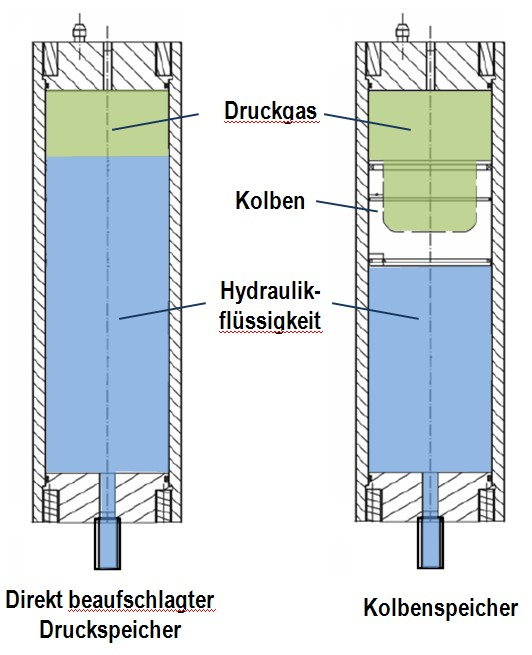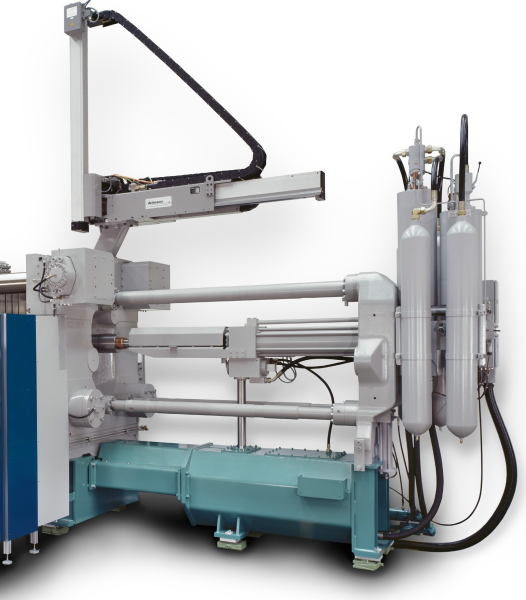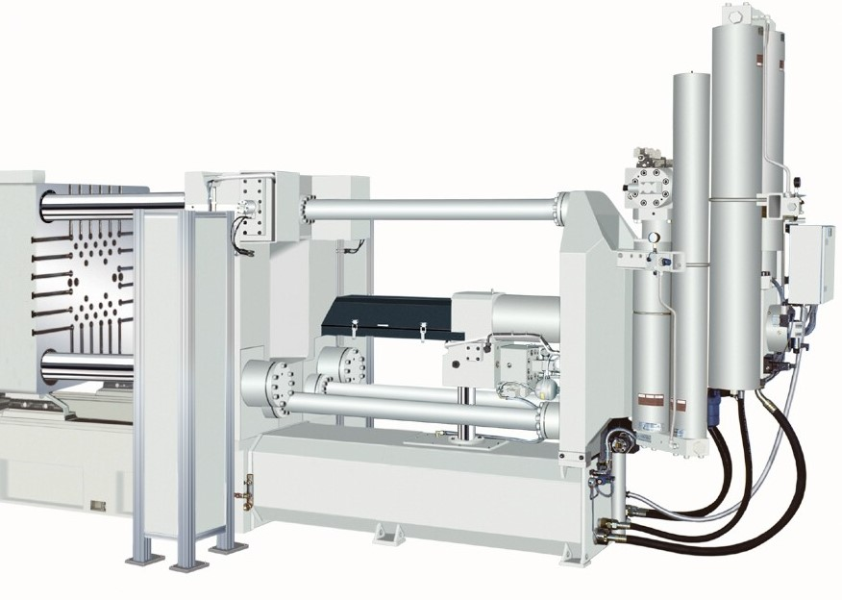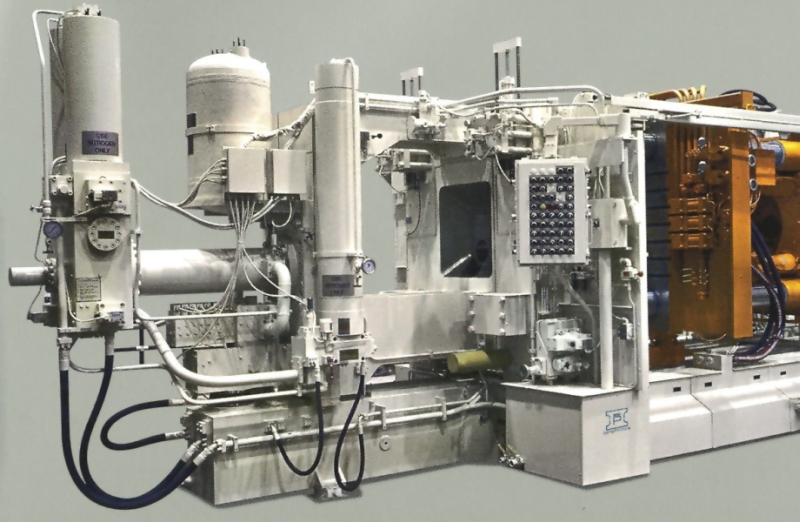Pressure accumulator
Hydraulic or pneumatic pressure vessel for pressure energy storage.
Hydraulic fluid is pressed with high pressure into a pressure vessel filled with gas (usually nitrogen). The hydraulic fluid compresses the gas and is available as “stored energy” at a later point in time. Gas and hydraulic fluid are usually separated from each other by a separating element (diaphragm or piston). This is to avoid that gas is separated from the fluid and also that gas escapes when the hydraulic system is depressurized. Pressure accumulators provide high volume flow in the hydraulic control systems for a short while. Pump volume flow can be kept low because only the average volume flow required is supplied. Accordingly, the capacity of the drive unit can also be kept at a low level thus allowing for increased overall efficiency.
Therefore, die casting machines mostly use pressure accumulators for driving the plunger and/or charging the casting metal with pressure. By opening the shot valve, the drive piston of the casting unit is charged with pressure moving the casting piston in the shot chamber. After the die casting mold has been opened, the drive piston is retracted by reverse charging of pressure, and the initial pressure is built up in the pressure accumulator. Many die casting machines are equipped with a so-calledintensifier, an additional pressure accumulator which multiplies the pressure at the end of the casting process by means of a larger piston. Thus, an adequately high end pressure or additional compression can be provided.
Regarding construction, pressure accumulators are classified according to directly charged accumulators - with the pressure gas used as propellant directly charged to the hydraulic fluid - and the so-called piston accumulators. Piston accumulators with pressurized gas and hydraulic fluid being separated by a movable overhung piston are more common. This design ensures that the pressure gas is neither swirled or foamed with the hydraulic fluid nor dissolved in the hydraulic medium (Fig. 1).
Pressure accumulators in die casting machines are used for the casting drive (Fig. 2, Fig. 3, Fig. 4), and in particular for the high acceleration of the casting piston from slow forward mode to quick mold filling (seeChangeover point). On the one hand, drive energy is permanently available, on the other hand, the stored energy can be immediately provided by connecting a pressure accumulator. The pressure gas presses the hydraulic fluid into the drive cylinder of the casting unit and expands in this process. In order to avoid that this volume increase causes significant pressure losses, one or more pressure gas bottles are usually added downstream of the pressure accumulator so that the total available pressure gas volume is relatively high (Fig. 2, Bühler AG).
The formulas for the state changes of gases can be used for accumulator design. Ideal gas state changes are usually used for calculation. For high pressures such as for die casting (200 - 300bar), real gas behavior must be used for calculation. The formulas are quite complicated and result in exact values for changes in pressure, temperature and volume only if iterative calculations are made.
It must be noted that ambient conditions and in particular the prevailing room temperature highly influence the pressure in the pressure accumulator, i.e. the pressure in the pressure accumulator rises with increasing ambient temperatures. This may also result in relevant changes in the casting process; it may be necessary to replenish the pressure accumulator or to release pressure in order to create stable conditions for die casting.





